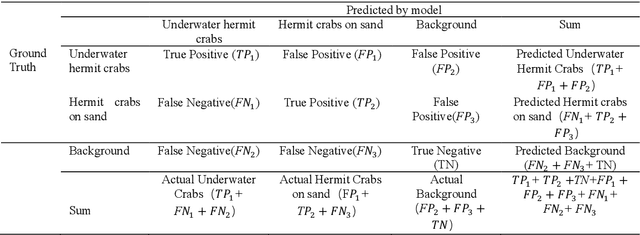Shigeru Tabeta
Monitoring of Hermit Crabs Using drone-captured imagery and Deep Learning based Super-Resolution Reconstruction and Improved YOLOv8
Aug 07, 2024



Abstract:Hermit crabs play a crucial role in coastal ecosystems by dispersing seeds, cleaning up debris, and disturbing soil. They serve as vital indicators of marine environmental health, responding to climate change and pollution. Traditional survey methods, like quadrat sampling, are labor-intensive, time-consuming, and environmentally dependent. This study presents an innovative approach combining UAV-based remote sensing with Super-Resolution Reconstruction (SRR) and the CRAB-YOLO detection network, a modification of YOLOv8s, to monitor hermit crabs. SRR enhances image quality by addressing issues such as motion blur and insufficient resolution, significantly improving detection accuracy over conventional low-resolution fuzzy images. The CRAB-YOLO network integrates three improvements for detection accuracy, hermit crab characteristics, and computational efficiency, achieving state-of-the-art (SOTA) performance compared to other mainstream detection models. The RDN networks demonstrated the best image reconstruction performance, and CRAB-YOLO achieved a mean average precision (mAP) of 69.5% on the SRR test set, a 40% improvement over the conventional Bicubic method with a magnification factor of 4. These results indicate that the proposed method is effective in detecting hermit crabs, offering a cost-effective and automated solution for extensive hermit crab monitoring, thereby aiding coastal benthos conservation.
Underwater litter monitoring using consumer-grade aerial-aquatic speedy scanner (AASS) and deep learning based super-resolution reconstruction and detection network
Aug 07, 2024Abstract:Underwater litter is widely spread across aquatic environments such as lakes, rivers, and oceans, significantly impacting natural ecosystems. Current monitoring technologies for detecting underwater litter face limitations in survey efficiency, cost, and environmental conditions, highlighting the need for efficient, consumer-grade technologies for automatic detection. This research introduces the Aerial-Aquatic Speedy Scanner (AASS) combined with Super-Resolution Reconstruction (SRR) and an improved YOLOv8 detection network. AASS enhances data acquisition efficiency over traditional methods, capturing high-quality images that accurately identify underwater waste. SRR improves image-resolution by mitigating motion blur and insufficient resolution, thereby enhancing detection tasks. Specifically, the RCAN model achieved the highest mean average precision (mAP) of 78.6% for detection accuracy on reconstructed images among the tested SRR models. With a magnification factor of 4, the SRR test set shows an improved mAP compared to the conventional bicubic set. These results demonstrate the effectiveness of the proposed method in detecting underwater litter.
 Add to Chrome
Add to Chrome Add to Firefox
Add to Firefox Add to Edge
Add to Edge